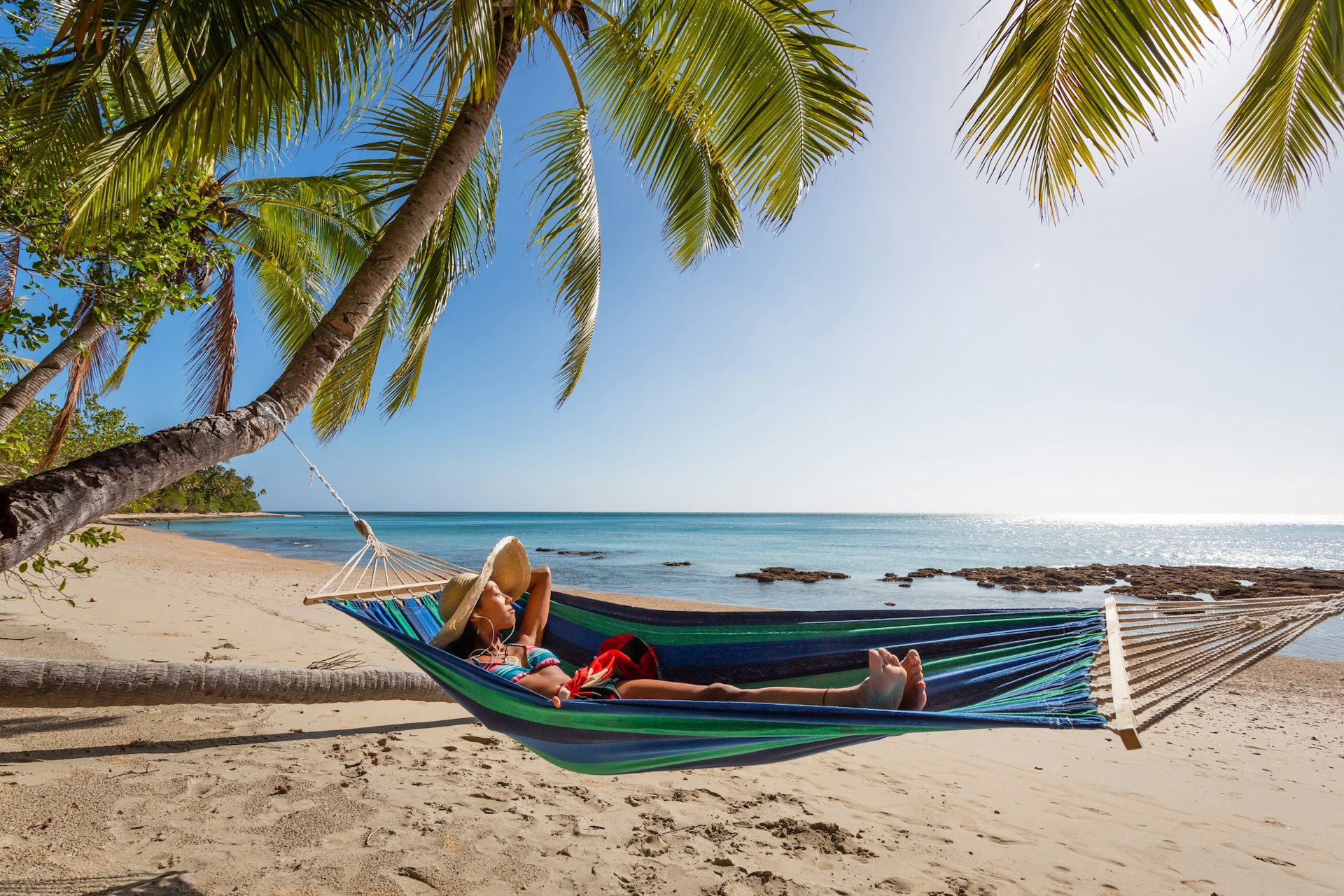Famous for being the private island playground of the rich and famous (some resorts secretly pride themselves on being the place billionaires go to escape the millionaires), Fiji doesn’t typically come to mind as a budget-friendly destination. Fortunately, a trip to the islands doesn’t have to cost a pretty penny.
With a little planning and local knowledge, you can experience the beauty of Fiji without taking out a loan. Armed with a comfortable pair of shoes, a bathing suit and your own snorkeling gear, you’ll have a trip that’ll rival that of a big spender.
When it comes to experiencing Fiji on a budget, here’s what you can expect to spend on essentials as well as insider tips to saving money.
Tally up mandatory meal plans and transport before booking your accommodation
If you’re traveling to an outer island in Fiji and are about to book a resort stay, be sure to read the fine print on how much your stay will cost. Oftentimes, you’ll be required to purchase a mandatory meal plan and boat transport through the accommodation, which can add a huge cost to your trip. Before you commit, compare a handful of options to find the real winner of value for money.
Limit your island hopping
For each island you visit, you’ll lose not only time, but also money. Once you leave Viti Levu, you’ll need a boat transfer or flight to connect you to the next island. If you’re still set on seeing as many islands as possible, it’s worth spending your time within the Mamanuca and Yasawa Islands and staying on islands that the Yasawa Flyer – a high-speed catamaran with hop-on hop-off passes – goes to.
Take the bus
Most Fijians get around the islands of Viti Levu and Vanua Levu, Fiji’s two largest islands, by bus. The public bus is very affordable, with fares starting at around FJD$1 per journey. An hour-long trip typically costs around FJD$4. These buses tend to have open windows and stop frequently. For longer trips, it’s worth booking a trip with Sunbeam or Pacific Buses, which are air-conditioned and each passenger is guaranteed a seat. Taxis start their meter at FJD$2 and cost around FJD$15 for a 15-minute journey.
Many Fijians also venture around the island by minibus, which is also affordable. However, many minibus drivers are notorious for driving above the speed limit. You’d be riding in one at your own risk.
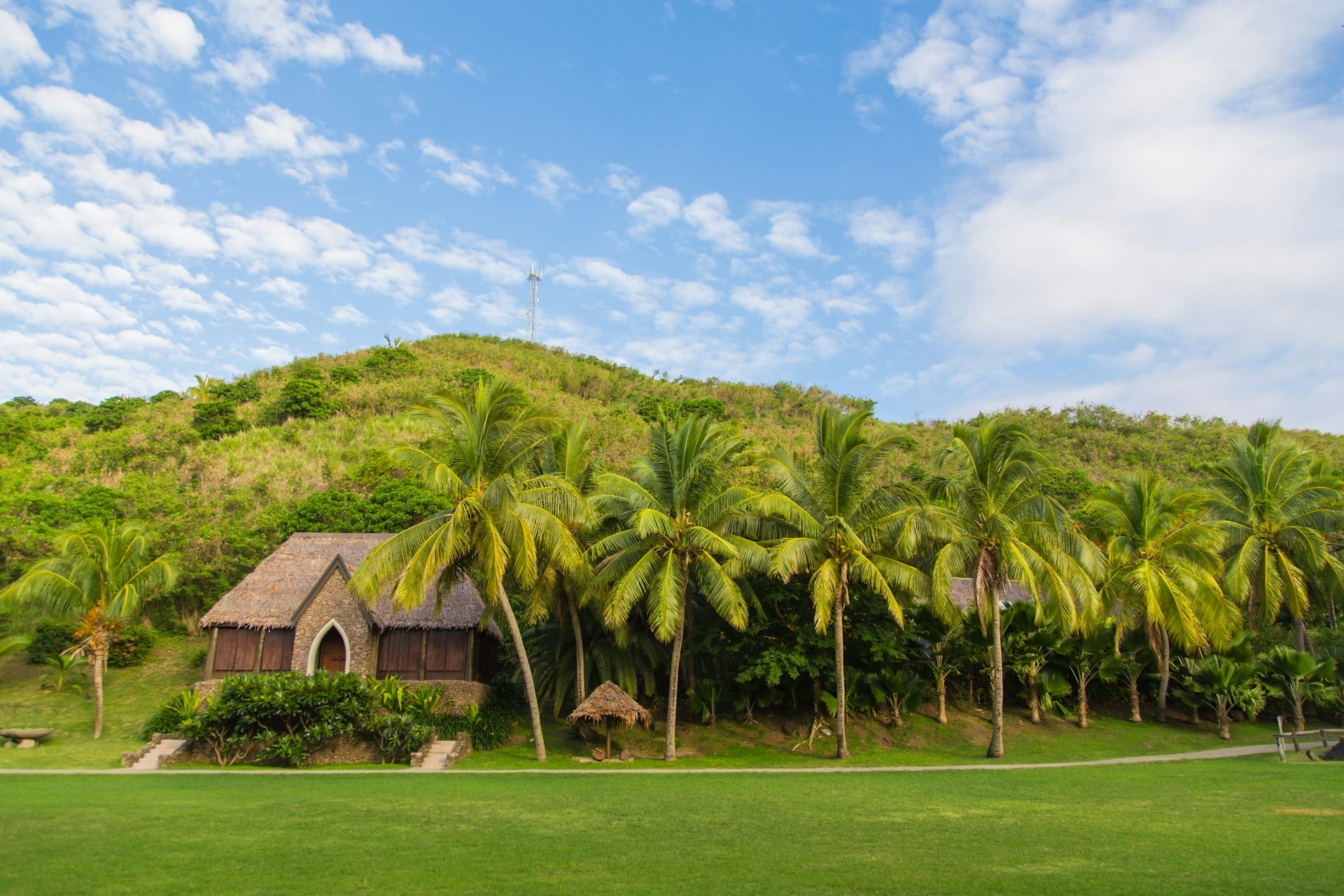
Use the transport included in your day trip excursions
Most tour companies on Viti Levu will provide free transportation within a certain radius from their departure point, saving you money on taxi fares. You can often use this to your advantage if you wish to be picked up at one spot and dropped off at another. For example, perhaps you’re staying at a resort that isn’t within walking distance from where you’d like to have dinner.
Ask for a multi-day discount from tour companies
Some travel companies in Fiji offer a variety of tours. South Sea Cruises, for example, offers trips to private island day clubs, day cruises onboard catamarans and monohulls, snorkeling tours and more. If you book a second tour with them during your trip, you can save up to 20%. Many other tour, scuba and cruise companies offer repeat visitor discounts that are not widely advertised, so it’s always worth asking.
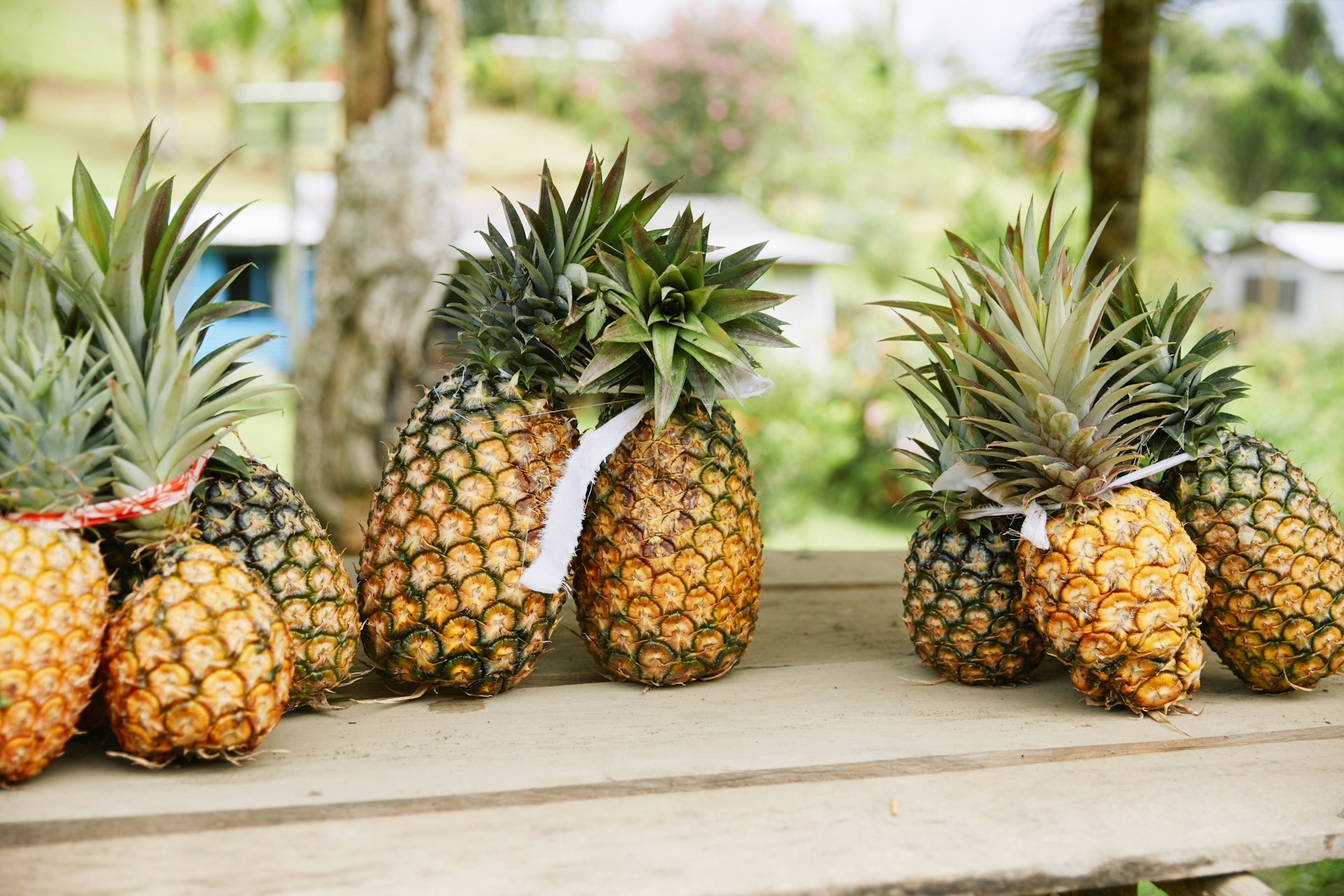
Shop at the markets; not the grocery stores
Stroll through any of Fiji’s markets and you’ll find piles of freshly picked fruits and vegetables neatly stacked on colorful plates.
In Fiji, it’s normal to sell produce by the heap rather than one-by-one. The produce found within the local markets is incredibly good value compared to the fruits and veggies sold at grocery stores, which are often stocked with imports. Similarly, the markets are where you’ll find handmade souvenirs, spices, Indian snacks, Fijian treats, sandwiches and even kava at just a fraction of what they sell for in a store.
Activate a local SIM card for wifi
Mobile internet data is relatively cheap in Fiji compared to most parts of the world. The two major cell phone networks (Digicel and Vodafone) often run promotions for tourists at the airport, where you can get your first one or two GBs of data for free. At full price, expect to pay around FJD$10 for 20 GB, valid for two weeks.
Internet access at hotels is often free, but on the outer islands it will cost around FJD$20 per day with strict usage limits. Compare internet coverage maps between the providers based on your trip, as reach is limited in some areas of Fiji. Even better, switch off and fully embrace island life.
Pack your own snorkeling gear
With your own mask, snorkel and fins, you have a free activity you can do any time and from any island. Without your own gear, you’re at the mercy of rental shop hours, gear quality and availability, and prices. Snorkeling gear is included as part of your stay at some resorts, but can run up to FJD$20 per day at others.
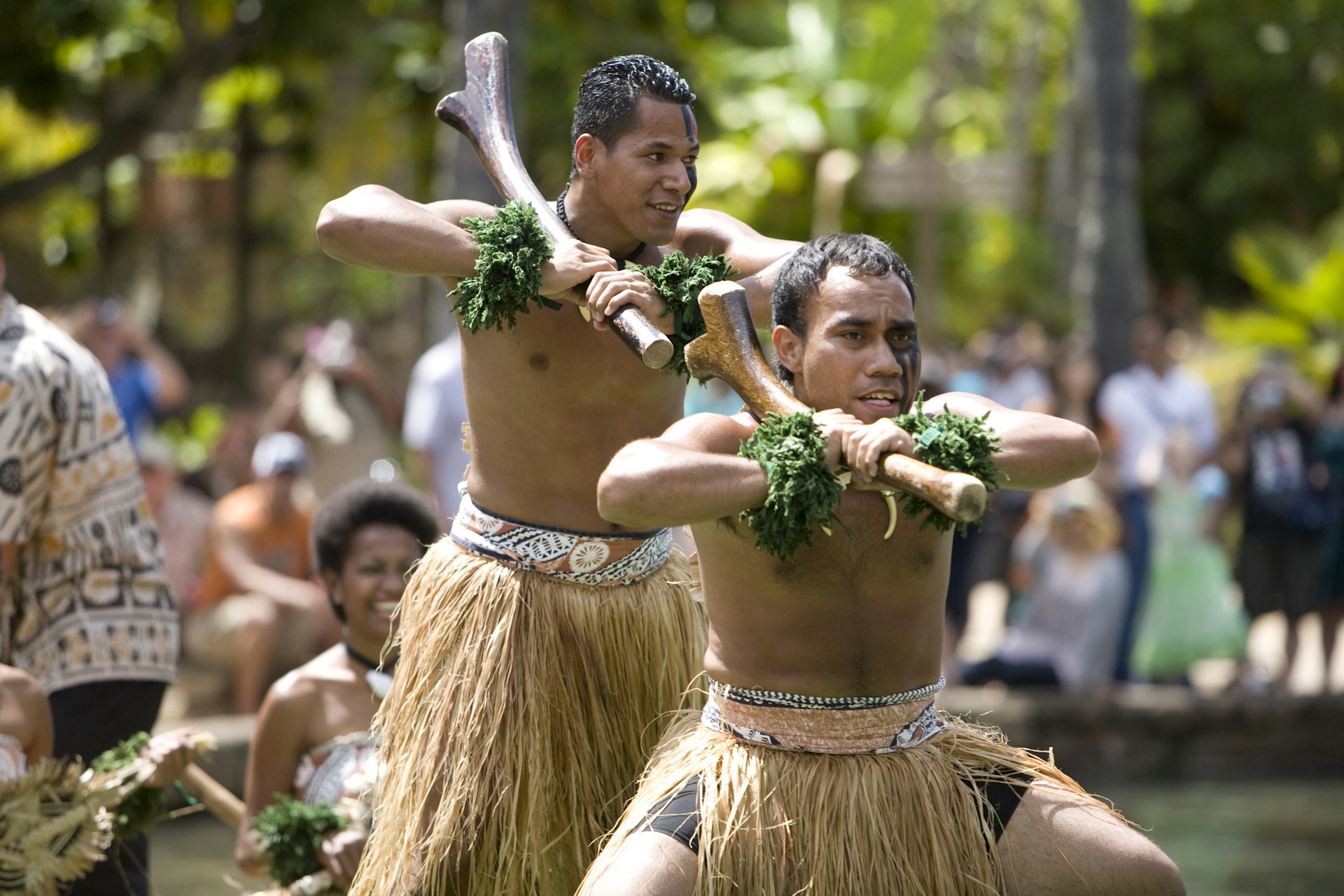
Skimp on accommodation, splurge on activities
Is Fiji cheap or expensive? Well, it’s generally an expensive destination. When it comes to value for money, you might be better off checking into a budget-friendly accommodation and splashing out on day trips. A private island resort can run thousands of dollars per night and incur hefty food and transport costs. You’ll likely get more for your money by staying in a hostel or hotel on Viti Levu and taking day trips out to private island beach clubs or resorts. Most of these tours span eight hours, giving you a full day of luxury and adventure.
Ride the ferry instead of a domestic flight
If you’re traveling to islands like Ovalau, Vanua Levu, and Taveuni, a ferry ride will typically cost around 10% of what you’d pay for a domestic flight. This is an ideal option if you have plenty of time and flexibility in your schedule – ferry timetables often run behind schedule and are dependent on weather. Pack plenty snacks and wear comfortable clothing if you do opt for the ferry.
Book your trip outside of Australia and New Zealand school holidays
It can pay dividends to time your trip carefully. Most tourists hail from Australia and New Zealand, and accommodations climb in price whenever it’s their school holidays. Prices also spike during peak season, from June to the end of August, as well as Christmas time.
Affordable Fiji holidays often coincide with Fiji’s cyclone season, which lasts from November to April. This may feel like a gamble, but prices are generally more affordable and you could have pleasant weather in between short-lived rainstorms.
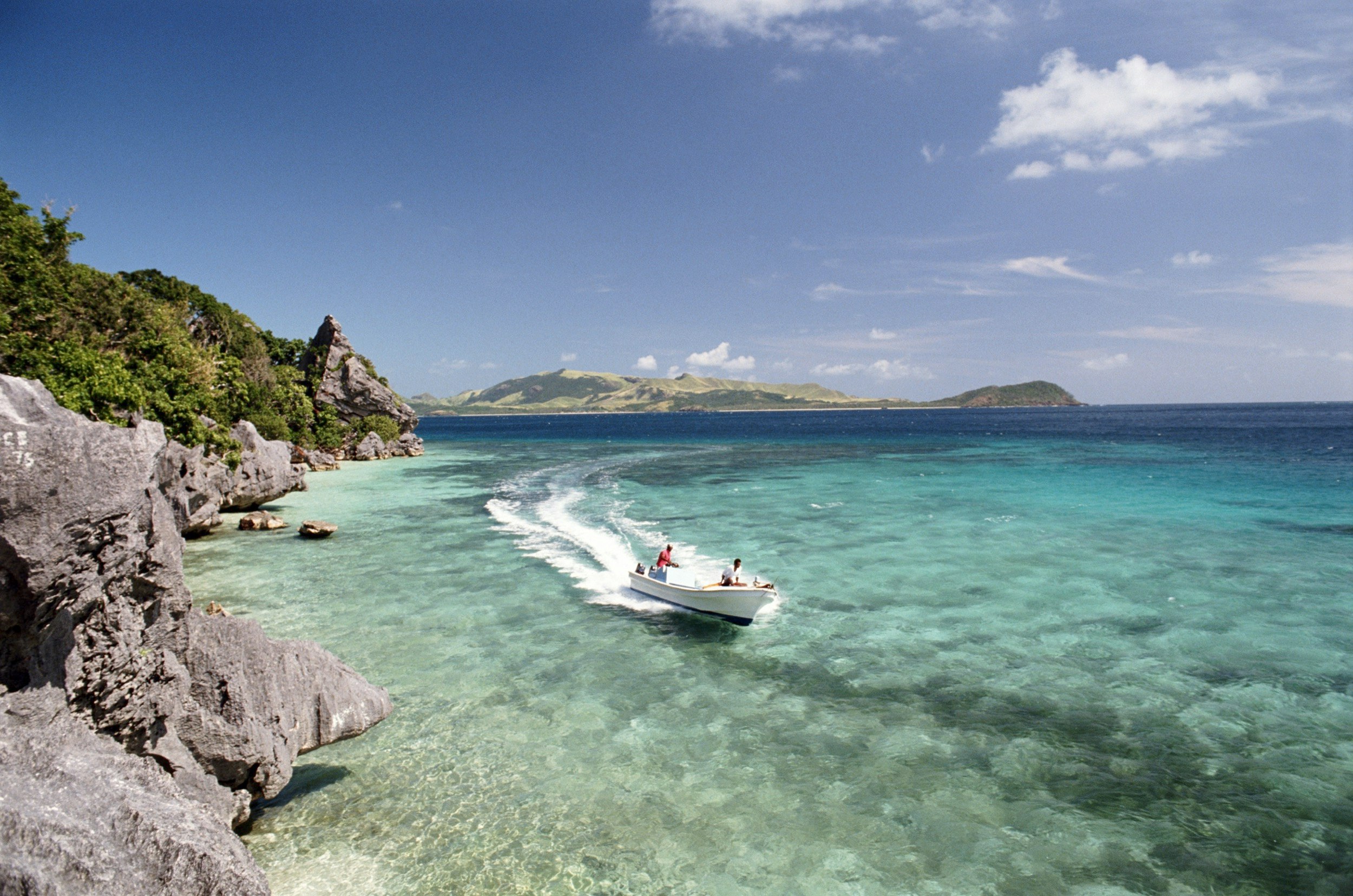
Arrange excursions outside of the resorts
If you’re staying at a large resort, you’ll likely be linked to a major tour company for any excursions. These companies are often more expensive than the local family-run companies, which typically run smaller group tours and excursions.
You’ll find local operators through social media sites and asking locals for personal recommendations. Finding Islands Tours and Joji Tamani Adventures organize tours throughout the islands, catering to small groups without a high price tag.
Drink local or BYO booze
Locally made coconut rum, gin and beer means you can drink affordably on your island escape. If you wish to have a glass of wine or an imported spirit, expect a hefty tab at the bar. Alcohol is heavily taxed in Fiji, and the best place to stock up is at the duty free shop on arrival. Each adult passenger can bring up to 2.25 liters of spirits or 4.5 liters of wine and beer.
Remember cash is king in Fiji
International credit cards incur a whopping 2 to 5% extra charge on most purchases throughout Fiji. Pulling cash out of an ATM typically has a high conversion cost, as well as an FJD$10 to FJD$15 added fee. All ATMs in Fiji have a daily withdrawal limit of FJD$1000 regardless of your bank’s daily limit. Pulling the maximum out at once is the best way to keep your per-transaction costs down.
Daily costs
- Hostel room: FJD$20-60 for a dorm bed
- Basic room for two: FJD$240-500
- Self-catering apartment (including Airbnb): FJD$450+
- Public transport ticket: FJD$1-3 for short bus trips, FJD$16-20 for bus trip between Nadi and Suva
- Taxi: FJD$5-10 for short trips; FJD$120-200 for trip between Nadi and Suva
- Coffee: FJD$6
- Fresh coconut: FJD$2
- Roti stuffed with curry: FJD$2
- Dinner for two: FJD$20-60
- Beer/pint at the bar: FJD$8
The average amount of money you can expect to spend per day in Fiji – including three meals, accommodation, transportation and an activity – is around FJD$200-400 depending on your choices.
